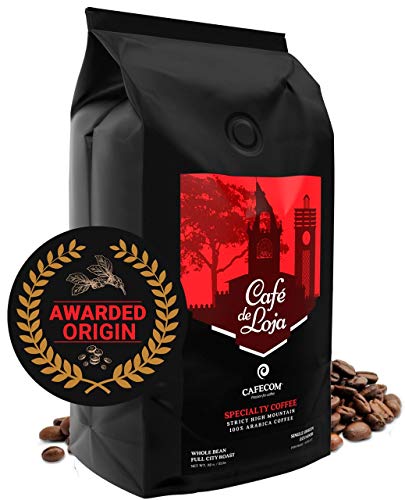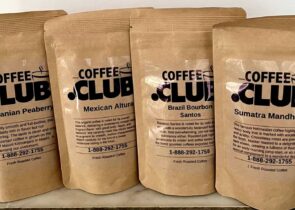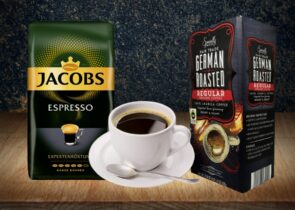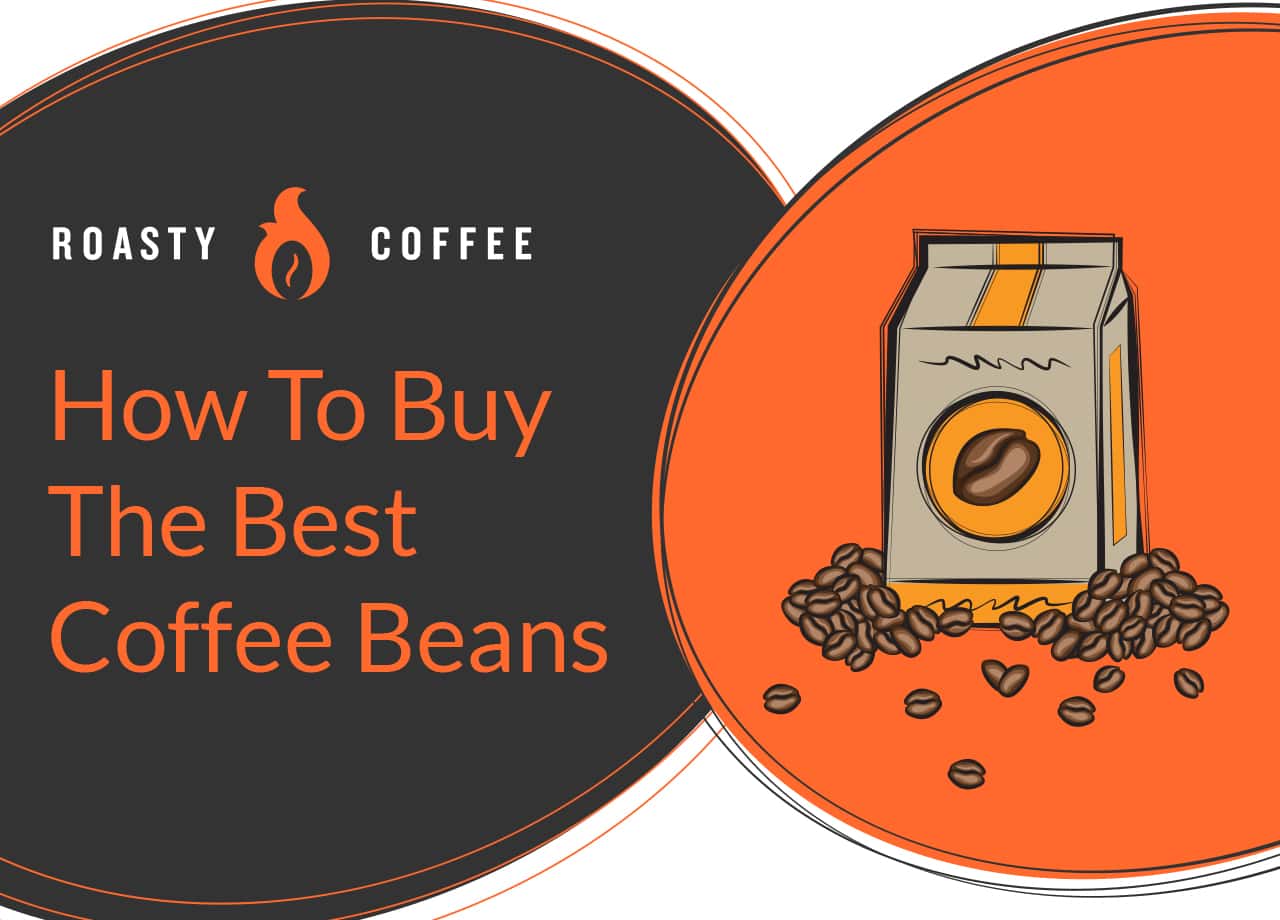
Pour over. French press. Brew duration. Water temperature. You can refine your brewing methods and techniques all you want, but at the end of the day, the coffee beans you use are going to have the biggest effect on flavor. If you’re not buying the best coffee beans possible, you’re cheating yourself out of truly delicious, high-quality java.
But choosing the right type of beans is only half the battle. If you don’t store them properly, they’re going to lose all that awesome flavor before they even make it to the coffee grinder, let alone into your cup. So before you pour good money and what could’ve been good coffee down the drain, learn what to look for in your coffee beans, and then what to do with them once you get them home.
The Best in Beans: Our Top Picks
At A Glance: Our Top 5 Picks for Coffee Beans
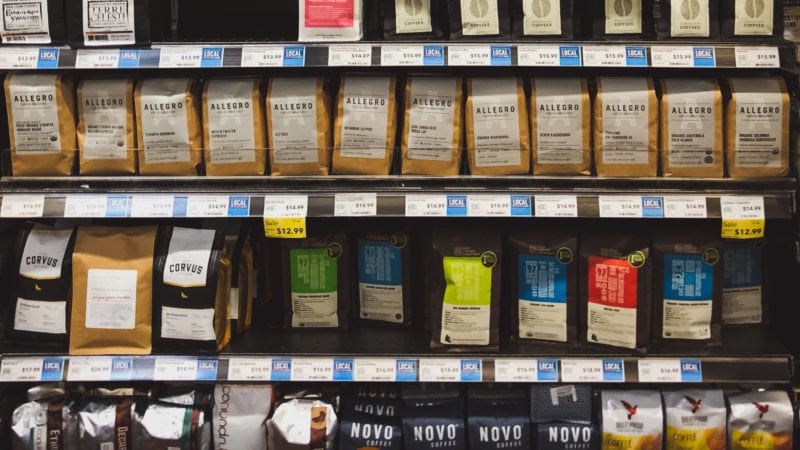
Quick Summary: Best Coffee Beans
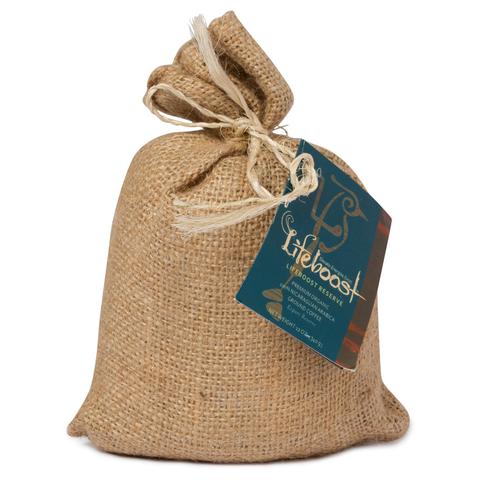 | Our Top Choice LIFEBOOST COFFEE |
| Check On Lifeboost→ |
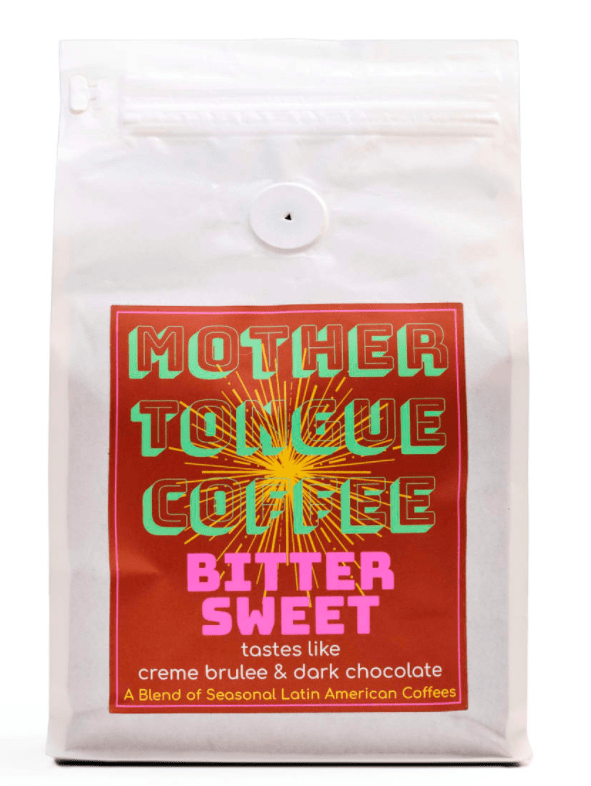 | MOTHER TONGUE COFFEE BITTERSWEET BLEND |
| Check Price → |
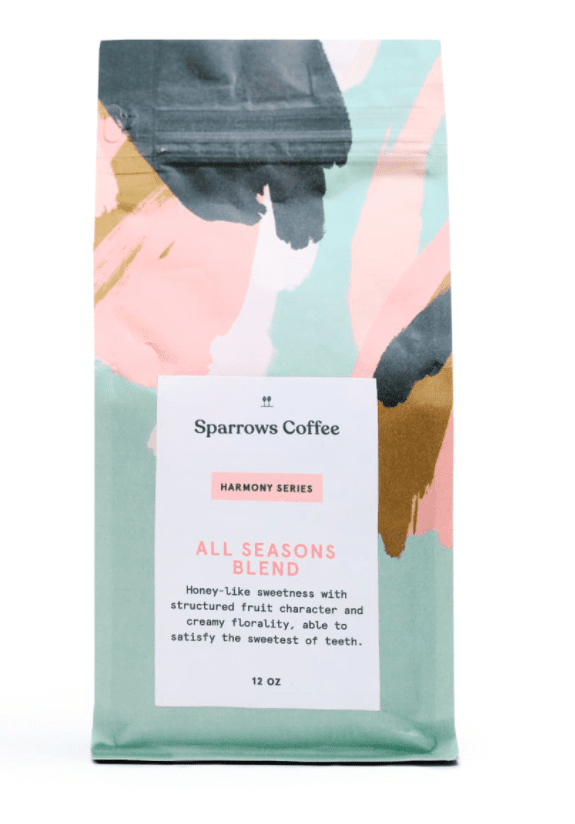 | SPARROWS COFFEE ALL SEASONS BLEND |
| Check Price → |
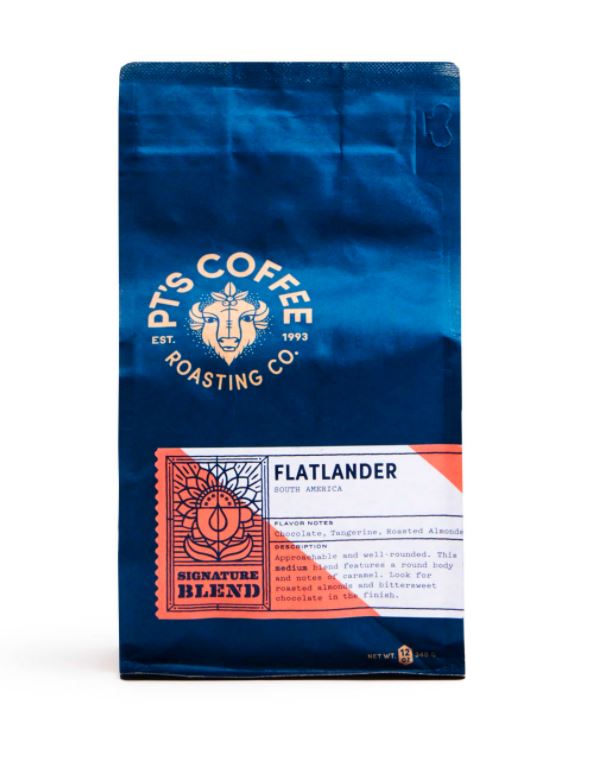 | PT’S COFFEE FLATLANDER SIGNATURE BLEND |
| Check Price → |
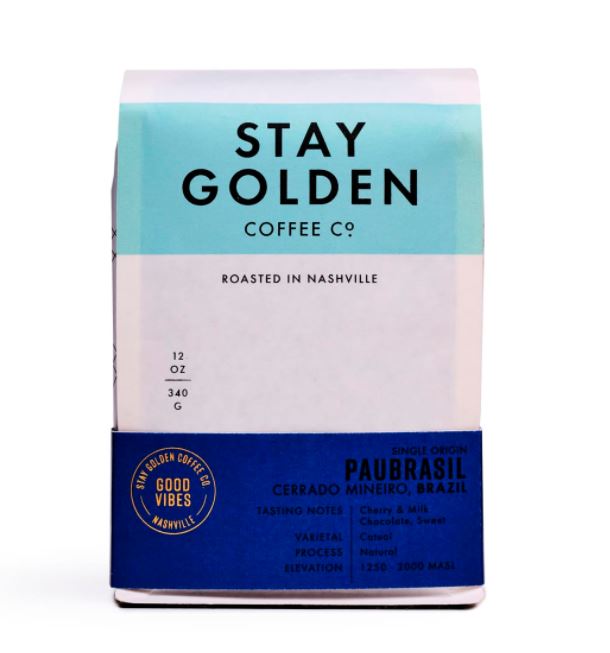 | STAY GOLDEN COFFEE CO. PAUBRASIL ROAST |
| Check Price → |
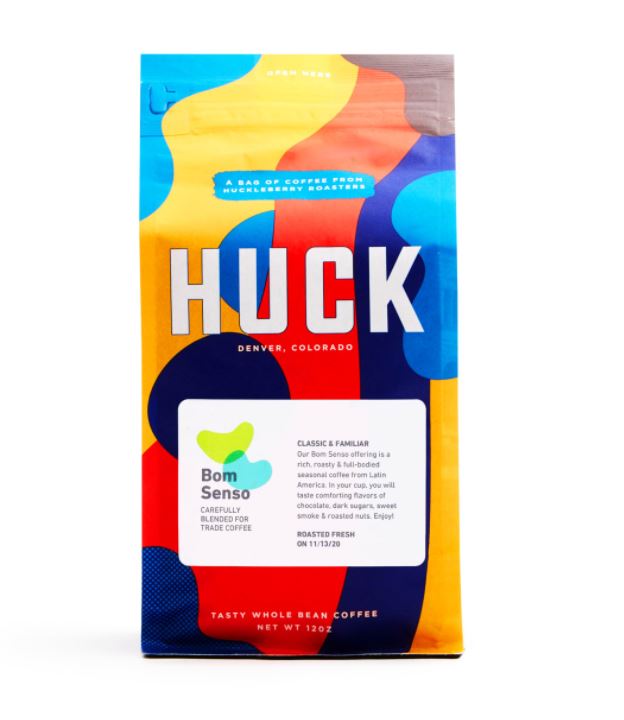 | HUCKLEBERRY ROASTERS BOM SENSO BLEND |
| Check Price → |
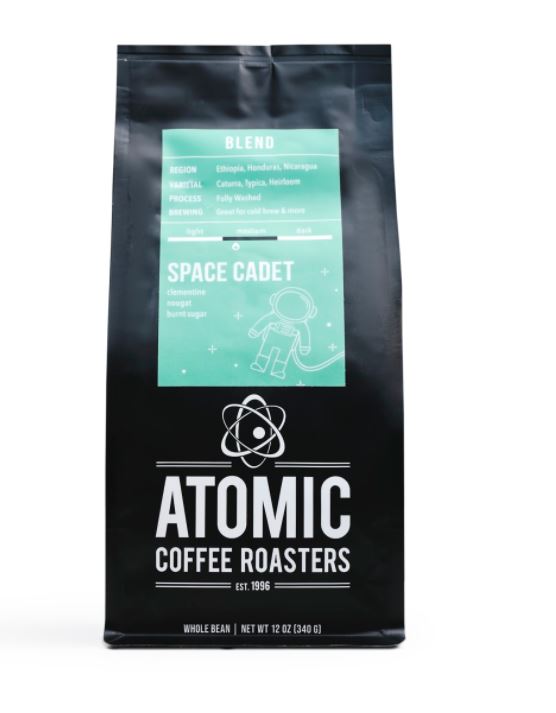 | ATOMIC COFFEE ROASTERS SPACE CADET BLEND |
| Check Price → |
 | DEATH WISH COFFEE |
| Check on Amazon → |
 | REAL GOOD COFFEE CO. DONUT SHOP COFFEE |
| Check on Amazon → |
 | LAVAZZA SUPER CREMA WHOLE BEAN COFFEE |
| Check on Amazon → |
Lifeboost Coffee

Lifeboost Coffee
Enjoy delicious, healthy, single origin, chemical-free, non-GMO coffee from small farms in the mountains of Nicaragua.
There are a few reasons Lifeboost Coffee made it onto our list of best coffee beans. The company focuses on sustainability and fairness, making sure coffee bean farmers are paid what they deserve and supporting farming methods that will help protect the environment long-term.
The single-origin Nicaraguan coffee boasts a rich, chocolate and caramel flavor that’s smooth with no bitter aftertaste. This type of coffee not only tastes good, but is good for you, too; the beans are certified organic, kosher, chemical-free, non-GMO, and naturally low in acid. Each batch is also third-party tested for mold and mycotoxins to ensure the coffee meets specific standards.
Mother Tongue Coffee Bittersweet Blend

Mother Tongue Coffee Bittersweet Blend
Smooth milk chocolate, luscious caramel, sweet hazelnuts – is this a coffee, or a candy bar? We can’t decide.
With the Bittersweet blend from Mother Tongue Coffee, what you see is what you get: the subtle bitter flavor of dark chocolate and the sweet tastes of creme brulee.
The blend of Latin American coffee is designed to be versatile enough for different brewing methods, so you’ll enjoy sipping a cup of this medium-dark roast poured straight from the carafe of your trusty automatic dripper, your handy dandy French press, or the brand new pour-over you’ve been experimenting with lately.
Sparrows Coffee All Seasons Blend

Sparrows Coffee All Seasons Blend
Living up to its name, this clean, sweet cup is perfect all year round – featuring notes of sweet cherry and smooth chocolate.
In a place like Michigan, where Sparrows Coffee roasts the Ethiopian and Colombian beans to perfection, it’s not uncommon for the notoriously inconsistent Midwest weather patterns to make you feel as if you’re experiencing all four seasons in a single day. That’s why the All Seasons blend just makes sense; the medium-roasted java tastes good at any time of the year.
As you sip on a cup of coffee brewed from this blend, note the citrus, milk chocolate, floral, and honey flavors all bundled up in a sweet and smooth package — simply delicious on a crisp spring afternoon or a cozy winter evening.
PT’s Coffee Flatlander Signature Blend

PT's Coffee Flatlander Signature Blend
Easy does it. And this coffee proves just that. A bittersweet aroma is balanced by a nutty, sweet finish. Here’s to one less complication.
Did you know that medium roast coffees are often called the American roast? This is because these strong-flavored, non-oily beans are generally preferred in the United States. With this in mind, it should come as no surprise that the Flatlander Signature blend from PT’s Coffee is so widely enjoyed.
Beans for this medium roast are sourced from South America. When it’s brewed, you’ll taste notes of sweet caramel and citrusy tangerine, and the chocolate aroma will have your mouth watering as soon as the first drop of java hits the carafe of your automatic drip machine. You and your taste buds will absolutely love the nutty, sweet finish of this well-rounded brew.
If you’re a fan of PT’s Coffee’s 1861 roast and are sad you’ve been unable to find it, no worries; this is the same blend, just with a new name and the same well-loved taste.
Stay Golden Coffee Co. Paubrasil Roast

Stay Golden Coffee Co. Paubrasil Roast
It’s not often we see such a full body in a coffee roasted this lightly, and with its creamy notes of milk chocolate, it really works.
There’s nothing wrong with bean blends, but most coffee lovers know that every once in a while, it’s nice to sip on single-origin coffees. This means all the beans came from the same place and can usually be traced all the way back to the farm on which they were grown, which helps sustainability and fair-trade practices.
Stay Golden’s Paubrasil roast is made with beans that hail from Cerrado Mineiro, Brazil, and according to the company, is 100 percent traceable. This sweet joe is lightly roasted in Nashville, Tennessee, and boasts notes of juicy cherries and milk chocolate. If you’re looking for a smooth way to kick off your morning, consider getting your hands on a bag of these beans ASAP!
Huckleberry Roasters Bom Senso Blend

Huckleberry Roasters Bom Senso Blend
With a big, chocolaty body, cozy roasted almond nuttiness and tons of balanced caramel sweetness, this Trade-exclusive cup is just about as comforting as you can get.
You’ve no doubt heard of The Adventures of Huckleberry Finn, but have you ever heard of the Adventures of Huckleberry Roasters? The company was birthed in Denver, Colorado, with the intention of serving good java that makes coffee drinkers happy, and to be sure they accomplish these goals, the roasters strive to be socially conscious and encourage collaboration.
The Bom Senso blend is one of the coffee roaster’s darker roasts and is made with high-quality beans from Latin America. The rich medium roast is littered with nutty and milk chocolatey flavors, and the full-bodied brew is the perfect drink to enjoy when you want to curl up in a cozy blanket with a cup of coffee in hand.
Atomic Coffee Roasters Space Cadet Blend

Atomic Coffee Roasters Space Cadet Blend
Extra smooth, extra chocolaty-sweet, and dare we say…extraterrestrial? A splash of ripe cherry juiciness makes this crowd-pleasing cup every bit as delicious hot as it is cold.
When quality beans are blended and roasted with care, the result is truly out of this world. With Atomic Coffee Roasters’ Space Cadet blend, out of this world is exactly what you get.
This java is a mixture of Honduran, Nicaraguan, and Ethiopian coffee beans that are medium-roasted to perfection. When you brew a batch of these beans, pay close attention to the flavors dancing on your tongue; the notes of clementine, burnt sugar, and nougat are sure to please.
This blend used to be marketed specifically for cold brew coffee, but the name change and rebrand make it clear that this sweet, smooth joe can be enjoyed hot, too.
Death Wish Coffee
If you’re a Roasty reader who often finds themselves struggling to come alive in the morning, even after the first sip of coffee, we’ve got just the joe for you. On the days when you need something intense to get you going, we think there’s no point in settling for anything less than the best.
Enter Death Wish Coffee.
The brand boldly declares these dark roast beans to be the world’s strongest coffee, and while we have no way of actually testing whether or not these beans are in fact stronger than the rest, we do know this coffee can provide just the boost you need to get through your day.
The smooth, highly-caffeinated brew is marked with notes of sweet cherry and chocolate, and you’ll also be happy to know that each bag of these beans is certified organic and fair-trade.
Real Good Coffee Co. Donut Shop Coffee
If you’re someone who appreciates the taste of coffee that’s simple and uncomplicated, donut shop coffee is more than likely a perfect fit for you. These roasts are named as such because the earthy flavor and simplicity of these lighter-roasted coffees usually pair perfectly with the sweetness of a donut without overpowering it. If that kind of brew sounds good to you, give the donut shop blend from Real Good Coffee Co. a chance.
These 100 percent arabica medium roast coffee beans come from South and Central America. Once picked, they make their way to Seattle, Washington, where they’re roasted and distributed to customers. With flavors of brown sugar, hazelnut, and plum, this coffee blend is great first thing in the morning and throughout the day.
Lavazza Super Crema Whole Bean Coffee
Though people who buy the next product on our list usually do so intending to brew it with an espresso machine, Lavazza’s Super Crema coffee beans make a mean cup of drip coffee, too — just make sure your grounds are coarse before brewing.
This combination of arabica and robusta beans works together to create a well-balanced and full-bodied brew, complete with notes of hazelnut and brown sugar. There are both flowery and fruity notes present in this joe, and the flavor manages to linger right between sweet and bitter. And the crema, or layer of golden brown bubbles atop your finished brew, is thick and easy to attain with these freshly roasted beans.
Cafe De Loja Specialty Coffee
There are plenty of reasons for drinking coffee. Maybe you sip on a hot, steaming mug of the stuff when you need a jolt of energy, or perhaps you’re a casual java drinker who just enjoys the taste of high-quality coffee. No matter your coffee drinking habits, Cafe de Loja Specialty Coffee surely won’t disappoint.
This brew’s 100 percent arabica beans are sourced from Ecuador, hand-picked from an altitude of over six-thousand feet, and carefully roasted to bring out all the beans’ natural flavors. The result is a medium-dark roast coffee with smooth and crisp fruity flavors but no bitter aftertaste.
In the coffee world, Cafe de Loja has proven to be one of the brands you can trust, as it has been ranked the best cup of coffee in Ecuador six times!
Koffee Kult Dark Roast
There isn’t a better way to start the day than with a smooth and clean cup of joe, and brewing Koffee Kult dark roast coffee grounds with your automatic drip brewer, French press, or pour-over coffee maker helps you do just that.
One-hundred percent arabica beans for this blend are sourced from Colombia, Guatemala, Brazil, and Sumatra and are precisely roasted to near-black colored, oily perfection — two characteristics you expect and want from a good dark roast. With this brew, you’ll find notes of cinnamon and cocoa. It’s smooth and bright, and if you finely grind them in your trusty conical burr grinder, this batch of beans is perfect for a shot of espresso, too!
Kicking Horse Coffee Kick Ass Blend
With a name like “kick ass,” you can expect this blend by Kicking Horse Coffee to really get you going…and it does!
The aroma of this sweet and smoky dark roast is a swirl of vanilla and chocolate, and its flavor is marked with notes of malted chocolate, molasses, and licorice. With a taste and smell like this, it makes perfect sense that Kicking Horse’s blend will motivate you to “wake up and kick ass.”
This coffee is a combination of Indonesian and South American coffee beans that are roasted in the Rocky Mountains. In addition to being delicious, the Kick Ass blend is organic, fair-trade, kosher, and shade-grown; all of that means not only is this coffee good for the consumer but for the bean farmers and the environment, too.
How to Pick the Best Coffee Beans for You
Now you know how to read a label and ferret out the best local coffee supplier. But what type of coffee beans should you actually get?
The flavor of your coffee all comes down to the variety of beans, and you only need to care about two of them: arabica and robusta.
Arabica
When it comes to a good cup of coffee, arabica, or Coffea arabica, is king. More than 60 percent of global coffee consumption is of arabica coffee. It’s preferred for its fruity, sweeter taste, and higher acidity.
Robusta
With less flavor and chemical complexity than the arabica coffee bean, robusta, or Coffea canephora, trades flavor for easier maintenance as a plant. This usually means less expensive coffee for you.
The canephora plant grows well in low-altitude environments and is naturally pest resistant. It also has a much higher caffeine content than arabica coffee.
Find Your Roast
There is no industry standard for roasting coffee beans, but generally, roasts fall into one of the following categories: light, medium, medium-dark, and dark roasts.
These aren’t the actual names of the roasts, but some familiar roasts are associated with those color categories. Light roasts are lighter brown (hence the name) and are roasted for a shorter duration. They’re generally the most caffeinated of all roast types. Common names include light city, half city, and cinnamon.
Medium roasts are an American favorite, which is why you’ll sometimes see American coffee on labels, even when the bean is clearly from Kenya. The beans have a medium-brown hue, a stronger flavor, and a non-oily surface. Other medium roast terms include breakfast and city.
Medium-dark roasts have a richer, darker color, as well as a little oil on the surface. This gives you a bittersweet aftertaste that isn’t too overpowering. Full city is a popular medium-dark roast.
Dark roasts are those shiny black beans that look great on camera. They have a shimmering, oily surface and are bitter when brewed. The beans run from shades of dark brown to charred-looking. The common names for the roast are often used interchangeably. You might know these dark roasts as high, continental, European, Viennese, Italian, French, or New Orleans roasts.
Taste, Taste, and Keep on Tasting
The best part about great coffee is that there’s so much of it! It’s always nice to have a go-to roaster and bean, but part of being a true coffee connoisseur is always being on the hunt for something new.
This is especially true if you buy directly from your roaster. Use their knowledge. Try new flavors. Step out of your coffee comfort zone. You might not absolutely love every cup, but we’re willing to bet you’ll find new favorites along the way.
It’s All in the Label
Once you know your way around a coffee label, you can easily pick up on the hints that will lead you to the best coffee beans. Here are a few things to look out for when selecting your beans.
Fair Trade
In the world of food labeling, fair-trade is an amorphous description that means…well, it depends on who you ask. You’ve probably seen a variety of competing fair-trade labels on packages of coffee and other products. It’s a good idea to familiarize yourself with what these mean.
Whether or not a fair trade certification equates to the best and freshest coffee beans is debatable, but what a fair trade label does is assure you that neither the coffee growers, their workers, nor the environment were stiffed in the process.
We recommend you research major fair trade labels to figure out which organization or certification best matches your values. Once you know which organizations and coffee brands you trust, it’ll be easier to find the fair trade beans that are right for you.
Fairtrade International, for example, is on a mission to promote fairer trade conditions for disadvantaged producers to help improve their economic conditions. Essentially, they believe the world’s poorest producers can have sustainable development if trade is transparent and better organized. They have a third-party inspection organization, FLO-CERT, that regularly audits products with the Fairtrade International label.
Fair Trade Certified, formerly TransFair and a member of Fairtrade International, is a nonprofit organization based in the United States. They’re open to producers of all income levels, not just the poorest of the poor. Their mission is to promote development and empower communities through a sustainable and socially conscious trade model that benefits everyone involved, from the farmer to the consumer.
Fair for Life certifications are not specific to the product. This third-party nonprofit certifies every step of the production, as well as entire companies. Their mission is to create “ethical, fair, and respectful partnerships” between producers, workers, employers, sellers, and buyers.
USDA Organic
Organic is another one of those fuzzy words used to sell products for a higher price. But when you see the USDA Organic label on a bag of coffee, it means the coffee has been produced under the following conditions:
- Growers actively manage their land to restore, maintain, and enhance local biodiversity.
- The growers work to integrate their farms into the local environment without disrupting the balance of natural ecological systems.
- Growers use methods to minimize pollution in the air, water, and soil.
- The growers do not use most conventional pesticides, bioengineering, ionizing radiation, or fertilizers made with synthetic ingredients or sewage sludge.
- The growers rely on traditional methods, such as crop rotations and biological controls, to manage weeds, pests, and soil health.
The main focus of the USDA organic label is to ensure farmers are doing everything they can to maintain local biodiversity and soil health without turning to conventional chemicals. That does not mean all organic products are chemical-free, though the list of chemicals approved for use in organic farming is short.
If you’re interested in supporting sustainable farming practices, USDA organic coffee beans are the way to go. But we’ll leave it up to you as to whether or not it means you’re getting the best coffee.
Coffee Red Flags
Sure, there are plenty of positive features to look for on your coffee beans label, but there are certain red flags you’ll also want to be on the lookout for.
100% Pure Coffee
If the package specifies that it’s 100 percent pure coffee, we would be concerned why the roaster felt the need to call it out. What else would it be? And just what on earth is pure coffee anyway?
Keep in mind that if it’s a trustworthy source, a 100 percent pure coffee label won’t be needed.
Scoop or Self-Serve Coffee Beans
If a roaster cares about the freshness of their coffee, they’ll properly store their beans in airtight containers or one-way valve bags away from direct sunlight. When you stumble on a store with walls lined with clear plastic bins displaying a variety of beans, turn right around and leave.
Scoop it yourself? No, scoop up yourself and your belongings and head right out the door.
Massive Quantities
Buying in bulk might be a money-saving strategy, but it will not get you the best cup of coffee. If your roaster will only sell large quantities, don’t give in.
Think about buying coffee like buying a fresh loaf of bread. You might get it once a week or every other week as you need it. If you buy too much at one time, you run the risk of subjecting yourself to stale coffee, or worse, wasting it.
Use-By Date
The coffee you find at the grocery store is much more likely to have a use-by date rather than a roast date. If you’re looking for fresh coffee, a use-by date is basically useless.
The use-by date is often a year beyond the roast date, so the most it can tell you is not to buy that coffee.
Frequently Asked Questions
Once you know your way around a coffee label, you can easily pick up on the hints that will lead you to the best coffee beans. But you may still have a few questions, and luckily for you, Roasty reader, we’ve got answers!
How do I choose the best coffee?
We can never stress this enough: always buy whole beans.
Pre-ground coffee might seem convenient, but you miss out on so much flavor to save so little time. It just isn’t worth it.
Air is the enemy of flavorful, aromatic coffee. You accelerate the oxidation process once you crack the hard outer shell protecting your bean, which means the flavor is muted more quickly. The closer to brewing you grind, the fresher and more flavorful your cup of coffee.
How much does the roast date matter?
It might seem like coffee has an eternal shelf life, but we promise it doesn’t. Sure, you most likely won’t get sick if you make coffee using year-old beans, but it definitely won’t taste as good as if the beans had been fresh.
Once a bean leaves the roasting environment, its chemistry immediately begins to change. The bean begins to release carbon dioxide from the roasting process, a process called degassing.
As the bean degasses, all those lovely oils begin to oxidize, which diminishes the flavor of your bean. Coffee bean freshness is highly subjective, but you generally want to make your coffee between four days and two weeks from the roast date, depending on how you brew.
For example, if you’re a fan of pour-over coffee, beans in their first week after roasting are optimal because you’ll get a more brilliant coffee bloom closer to the roast date.
But if you’re looking for a good shot of espresso, you might want to let your beans rest a little longer — around seven to nine days. After that, those older beans will be better for your next cold brew.
Remember, these are just general suggestions. Experiment and go with what tastes best to you.
Roaster Identity
If you’re getting your beans from a local grocer or independent coffee shop, find out who roasted the beans. Good roasters can make a name for themselves in the coffee community and beyond. There’s even an annual Good Food Award for the best roasters in the United States.
Roasters have their own processes and dedication to their craft, so if the roaster is highlighted on the label, you know you’re likely getting a better bean.
Where are the best coffee beans from?
Altitude, soil chemistry, rainfall, and sunshine all contribute to the flavor of the final coffee bean, so the beans’ origin is an important indicator of how they’ll taste.
Coffee trees thrive along the “Bean Belt,” which is the zone between 25 degrees north and 30 degrees south along the equator. If your bag of coffee or your barista can’t tell you where the coffee was grown, you might want to rethink your choice.
More than 50 countries produce coffee, but you may want to start with some of the more famous regions and get to know their flavor profiles before moving on to more exotic varieties.
- Hawaii: Named for the largest city on the Big Island, Kona is the most sought-after type of Hawaiian coffee. Between intense sunlight and frequent rain showers, the coffee has a rich flavor and moderate floral aromatics.
- Colombia: The care and attention from thousands of small family farms contribute to consistently mild coffee with well-balanced acidity, caramel sweetness, and occasional notes of nuttiness.
- Brazil: Thanks to the vast countryside with a variety of altitudes, Brazilian coffee has a wider range of flavors. Most often, they’re associated with peanutty flavors and a heavy body, which is perfect for espresso. It’s also the kind of coffee that tends to linger in your mouth…but in a good way!
- Ethiopia: Home of the apocryphal story about the discovery of coffee, Ethiopia offers massive coffee biodiversity. Between the wild and uncatalogued varieties of coffee and their different processing methods, you can expect more fruity, heavy, and wine-like coffees alongside floral, tea-like brews.
- Kenya: Most of the coffee grown here is done so without shade and processed using a fermentation soak. This gives Kenyan coffee savory-sweet flavors, like tomato and black currant, that may sometimes make your lips pucker.
- Indonesia: If you’re wondering why we brought up Indonesia, take a moment to think of your favorite Sumatra or Java roasts. The country is known for these varieties, as well as aged coffees with a deeper body and lower acidity.
All that to say…the answer to the above question depends on your taste preferences. Between wildly different climates and processing techniques, exploring coffee flavors by region can be a huge treat. Even if you already have a favorite or two, we recommend branching out occasionally. And who knows? You just might find a new favorite coffee region.
Where do you buy the best coffee beans?
Your first step is to skip the trip to your regular grocer unless it’s unique to your area or has a good deal with a local roaster.
You can buy coffee at a grocery store in a pinch, but you’ll likely miss out on more in-depth flavors and fresher beans.
Shop Local
When you set out to refill your coffee supply, the best place to start is a small, independent coffee shop. If they don’t sell coffee themselves, they might be able to point you to a local roaster you can investigate later.
Specialty grocers, especially ones who are focused on local sources or high-quality imports, may also lead to some delicious coffee beans.
If you get the chance, buying directly from the roaster is our favorite option. You cut out the middleman, which means more money goes directly to the roaster to help them stay in business and keep you stocked with fresh coffee beans.
To get the freshest beans, ask them about their roasting schedule, and make plans to be there when the next fresh batch goes on sale.
The best part? You can usually find someone who genuinely cares about the coffee beans and can give you great recommendations as you explore new flavors and styles.
Shop Online
If you’re not lucky enough to live close to a great coffee roaster, there’s always the magic of online shopping. You can even find companies that deliver new roasts right to your door every month, every other week, or even once a week.
Many roasters also roast and ship to order. So if there’s a particular roaster you’ve had your eye on, check out their website or call them directly to see whether they deliver in your area.
How much coffee should you buy?
You already know it’s not a good idea to buy coffee in bulk unless you run a coffee shop or a restaurant. But you also don’t want to run out of coffee mid-week when you’re trying to get out the door and make it to that meeting you don’t want to sleep through.
To know how much coffee to buy, you first have to know how much coffee you drink. We measure our coffee addictions in cups per day, not ounces of coffee beans. But it’s good to know roughly how much coffee you go through in the average week.
Once you find your baseline, you can avoid both overbuying and letting those carefully selected beans lose their freshness or not buying enough and encountering a morning tragedy. We recommend roughly 30 grams (about one ounce) of coffee beans per twelve ounces of water (two cups — and that’s coffee cups, not measuring cups).
So if you drink ten cups of coffee a week, you’ll need to get about 150 grams (around five ounces) of coffee beans.
What’s the best way to store coffee beans?
Whether you ordered them online or picked them up at the store, you now have that precious bag of delicious-smelling coffee beans. It’s time for the most crucial part of preserving the freshness of your coffee: storage.
Move them to an airtight container.
If your coffee beans come in a sealed, one-way valve, foil bag with a pinhole, you can probably ignore this advice. Those bags generally keep your coffee fresh for one to two weeks, which should give you plenty of time to enjoy your coffee.
However, if your coffee beans come in a paper bag, move them to an opaque, airtight coffee canister as soon as you get home.
Note: Don’t tighten the lid if you have freshly roasted beans. They’ll be releasing carbon dioxide, and you don’t want to warp or burst your container with gas buildup.
Think cool, dry, and dark.
Treat your coffee beans like a bottle of expensive wine. Wine hates the light. So does coffee. We’re not suggesting you build a coffee cellar (though that would be amazing!), but we do think wine storage is a perfect parallel to coffee storage. You want to give it a cool, dry, and dark environment.
A pantry or cabinet as far away from your stove as possible is the best place to store your coffee. The cabinet closest to your coffee setup might seem like the best place, but you want to make sure your beans are far away from any humidity that occurs when you boil water for your brew or have a pasta night.
Forget the fridge and the freezer.
You may have heard this bit of advice: put your coffee beans in the fridge or freezer to help them stay fresh longer. Don’t do this. It doesn’t work. In fact, not only does it not maintain the beans’ freshness, but it can also ruin their flavor.
For one thing, coffee’s cell structure is porous. That’s what makes it so great at absorbing aromatics during the roasting process. That’s also what would make your coffee taste like chopped onions or whatever other pungent food you may have in your refrigerator.
Another issue is moisture. Your coffee can condensate in that cold and damp environment, which pushes all those delicious oils to the surface. That means your coffee ages more quickly and loses more flavor.
And if none of that was enough to convince you to store your beans elsewhere, know this: coffee beans are not immune to freezer burn.
Well, It’s Bean Fun (We Couldn’t Resist)
Phew. That’s a lot to take in. But you are now officially a champion of coffee labels! You know exactly how to buy the best coffee beans and then store them properly.
Now get out there and find a new amazing variety of coffee beans to try. Keep striving for the best cup of coffee you can make.
Happy Caffeinating!




